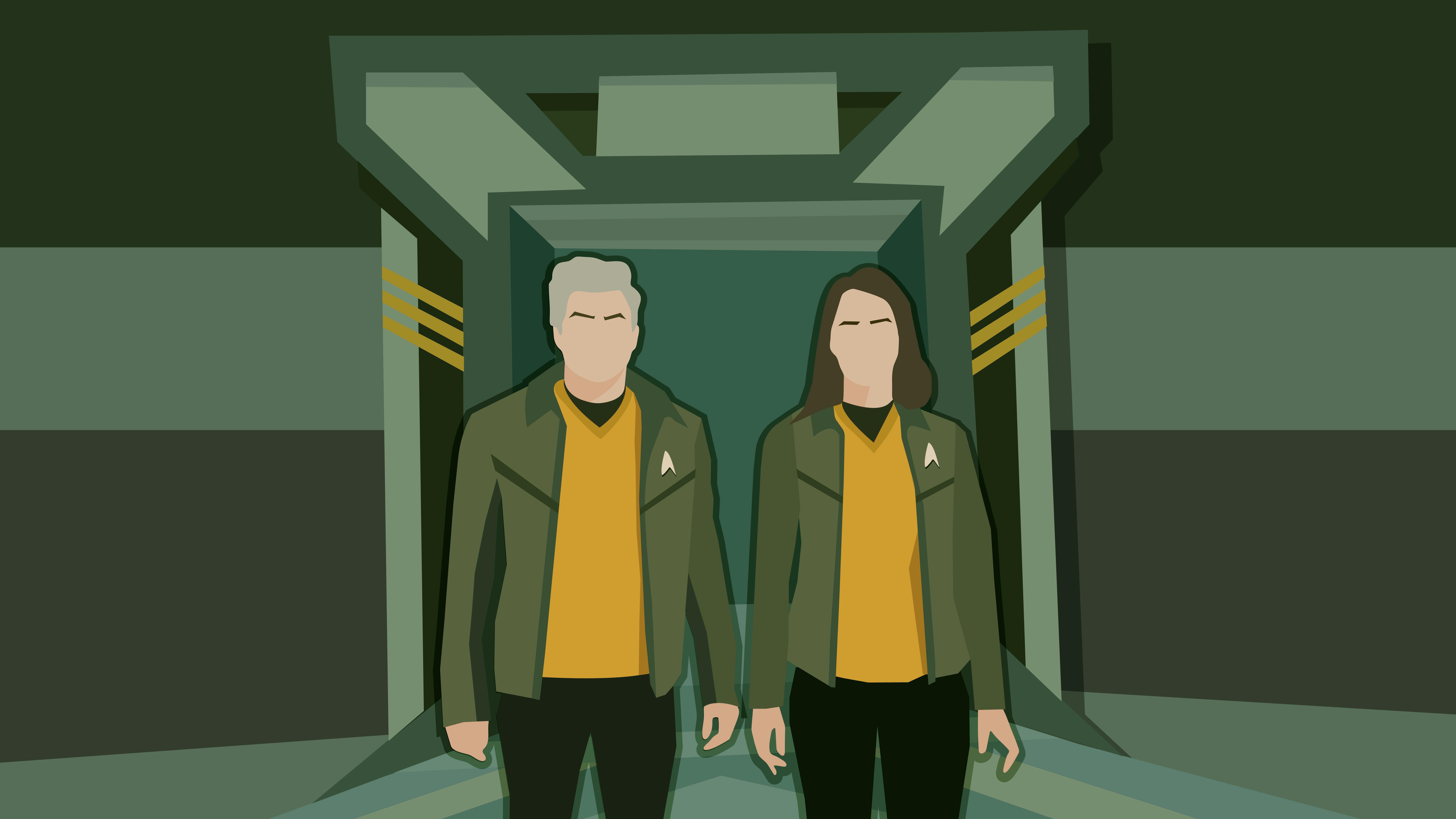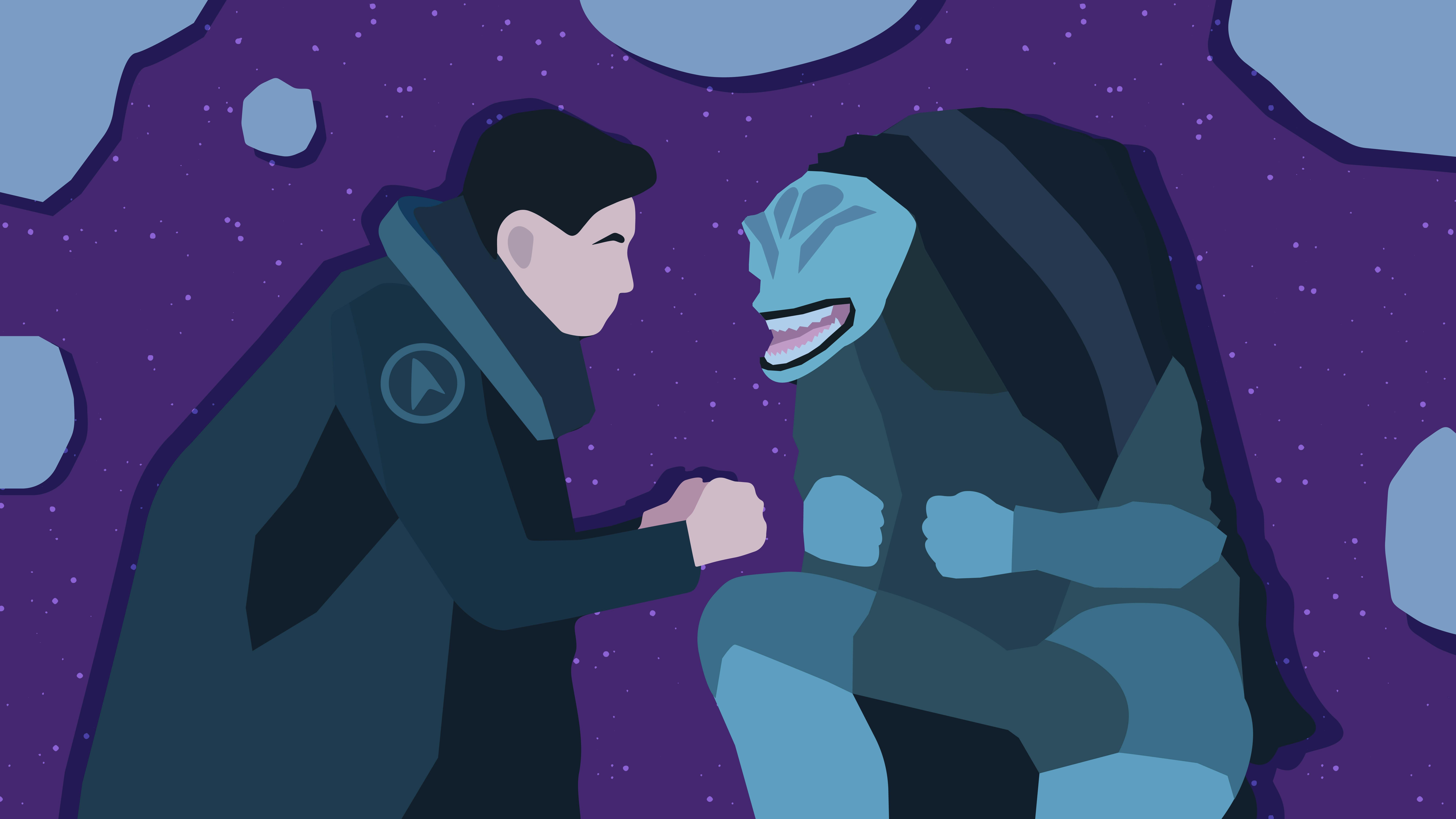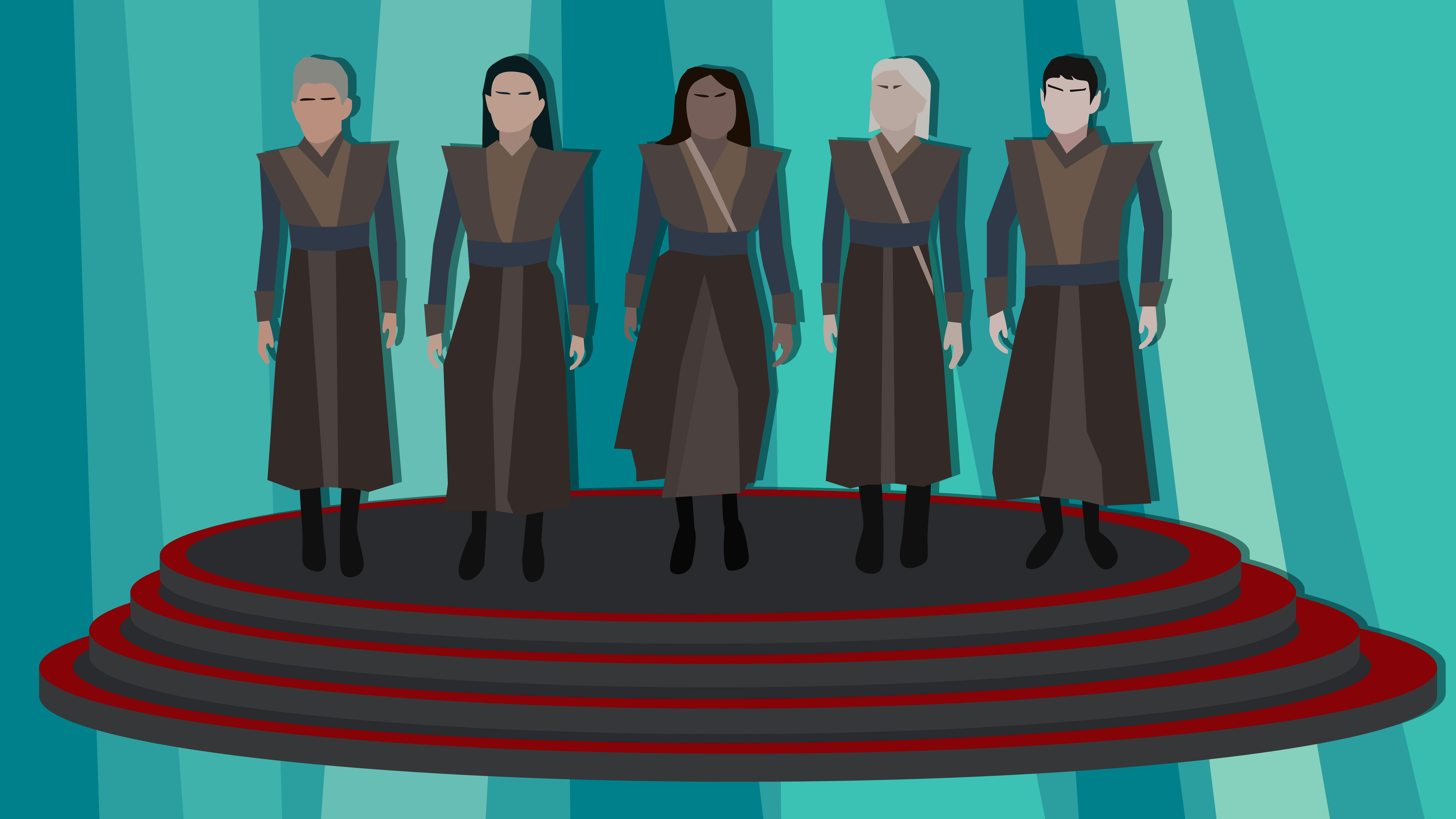Published Mar 21, 2024
'Genesis' Director's Commentary with Gates McFadden
For its 30th anniversary, series actress looks back on her Star Trek: The Next Generation directorial debut.
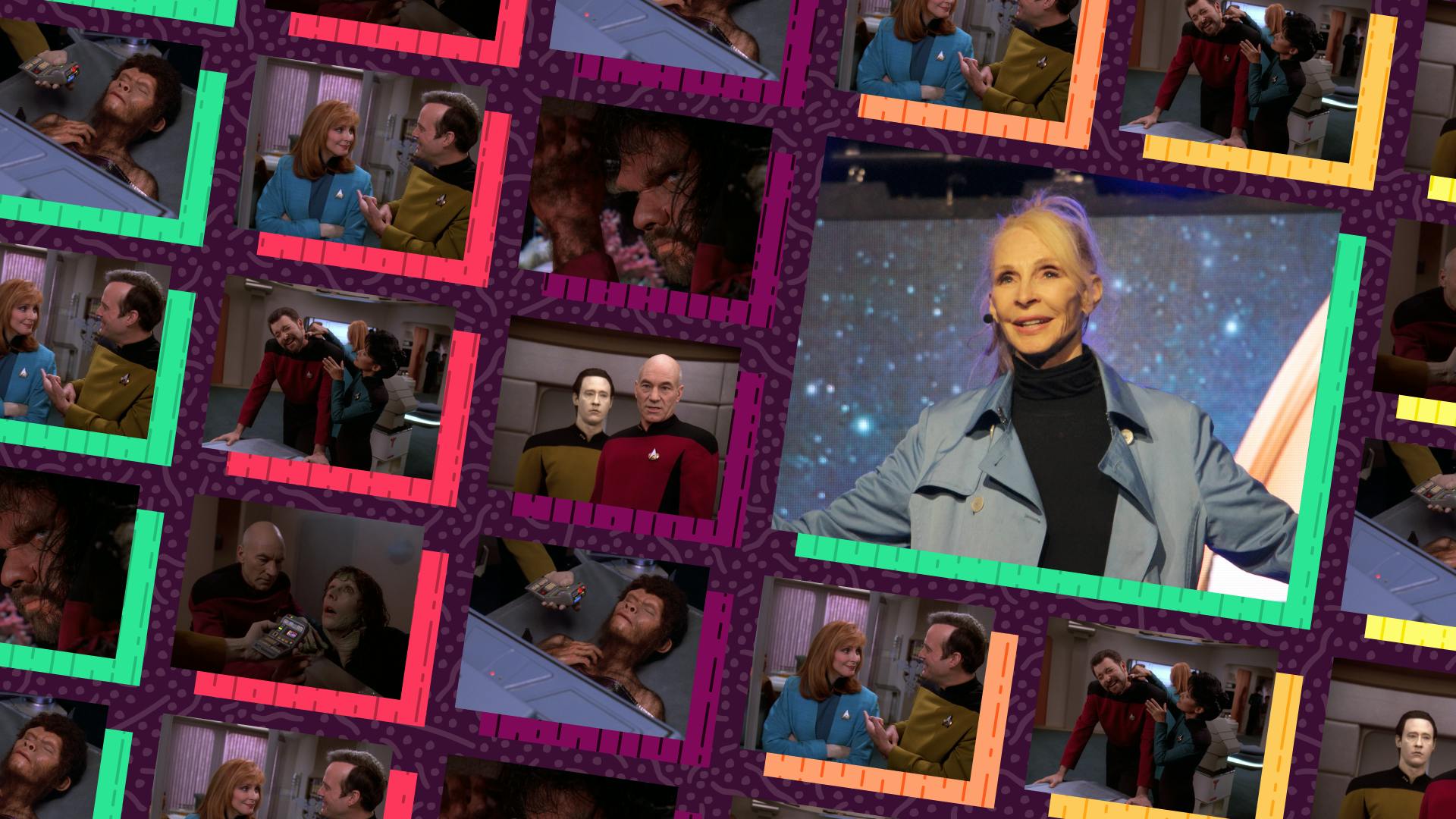
StarTrek.com
The seventh season horror episode of , "," premiered on television screens on March 21, 1994, 30 years today.
The episode also marked the first time an episode of the franchise had been directed by one of Star Trek's main actress. To mark the anniversary of this milestone, series star and episode director Gates McFadden treated the guests aboard Star Trek: The Cruise VII to a live commentary viewing of the episode.
Here's everything we learned behind-the-scenes from Gates herself! As she stated, "Very, very few people in the world that have directed TNG actors and iguanas and kittens."
Setting the Scene
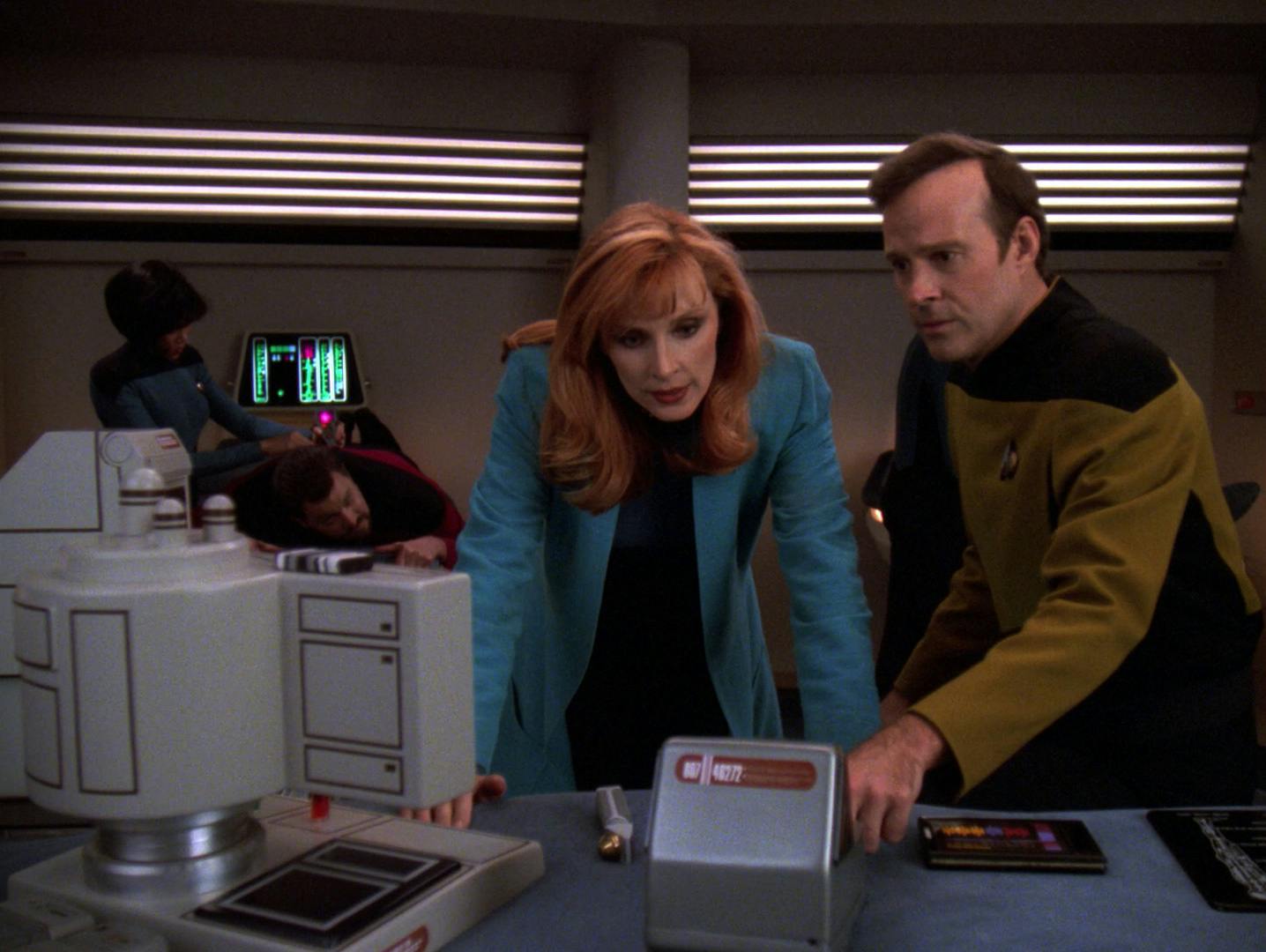
"Genesis"
StarTrek.com
It had always bothered McFadden that on a ship operating with a full complement that Sickbay only ever had just one patient; it didn't make sense to have the place empty all the time. "Genesis" provided her the opportunity to show this dynamic choreography with all the range of issues that pop up on a ship with hundreds of crewmembers.
With the camera's choreography, viewers were able to see Nurse Ogawa tending to the Cypirion cactus needles stuck in Riker's back, Dr. Crusher addressing Barclay's hypochondriac's concerns, and Data with a pregnant Spot in his arms. Crusher in constant motion was deliberate on Gates' part as there had been plenty of episodes when the ship's doctor was static in her Sickbay. This entire scene was something McFadden was incredibly proud of "after many years of [portraying it as] very static."
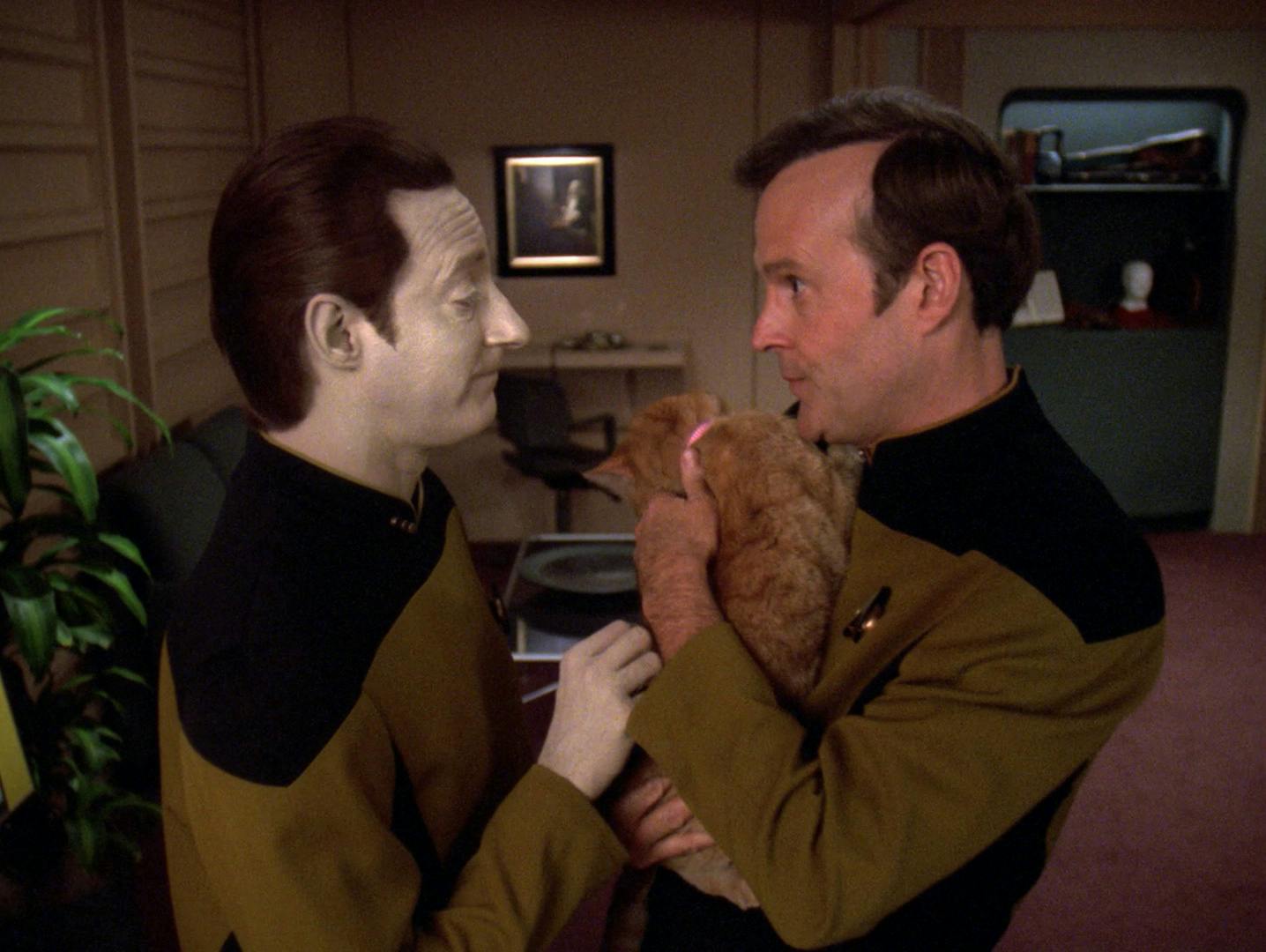
"Genesis"
StarTrek.com
Early in the episode, it was important to highlight a thick pink collar on Spot's neck, which will help viewers (as well as the crew) to realize the disease ravaging the ship was also affecting animals like Spot who was later transformed into an iguana fashioning a pink collar.
This same scene with Data, Barclay, and Spot proved to be a challenging scene to direct for McFadden. Continuing with the camera choreography, she wanted the scene to pan down from Barclay and Data as they peer over the furniture before discovering Spot's pre-planned pregnancy safe space.
Most Difficult Talent on Set
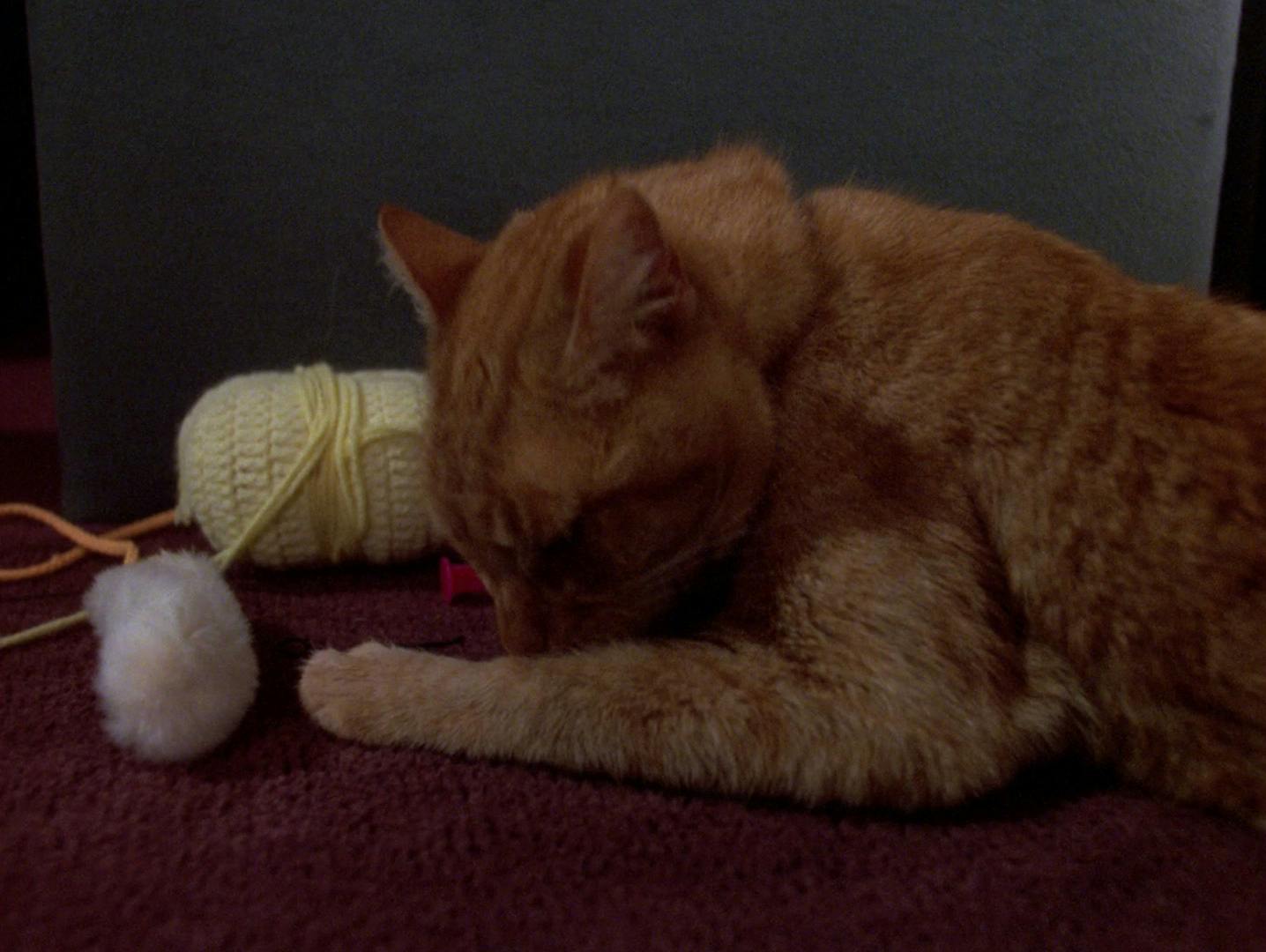
"Genesis"
StarTrek.com
In addition to having the scene with Spot to play out as she had envisioned, McFadden revealed it was also challenging to get Spot to lick herself for the shot, which she recalled as a whole "event" on its own.
"Anything you do with cats can be very difficult," revealed McFadden. "What was hilarious to me is because I love cats, and I've had cats all my life. You get them purring and it's easy. But Spot was not happy that day. You can see by the face, which was like, 'My agent does not want me to do this.'"
Hints of the Crisis at Hand
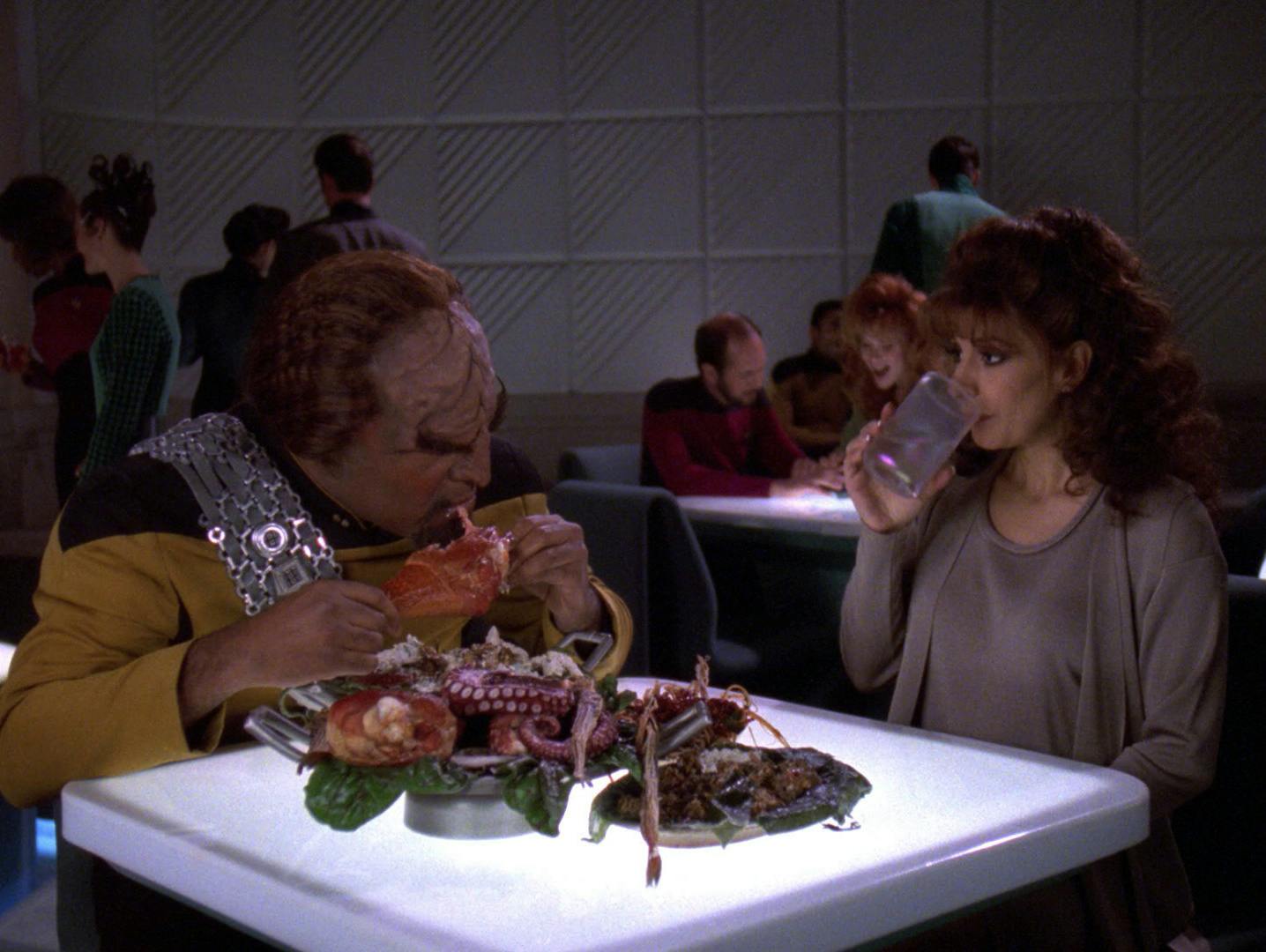
"Genesis"
StarTrek.com
It was crucial to gradually demonstrate things where not right on the Enterprise. On the Bridge, Worf was irritable with Riker's presence in his personal space, which carried through into the next scene when Deanna Troi startles him when approaching him from behind as he's eating. Unfortunately, for Michael Dorn, to demonstrate Worf's insatiable hunger, he had to feast on a medley of items that had strong visual weight.
McFadden appreciated the subtlety of the scene as you can begin to see Worf's de-evolution. In addition, you notice how the environment is affecting Deanna not only physically, but also her thirst.
Noticeable Changes in Characters and Environment
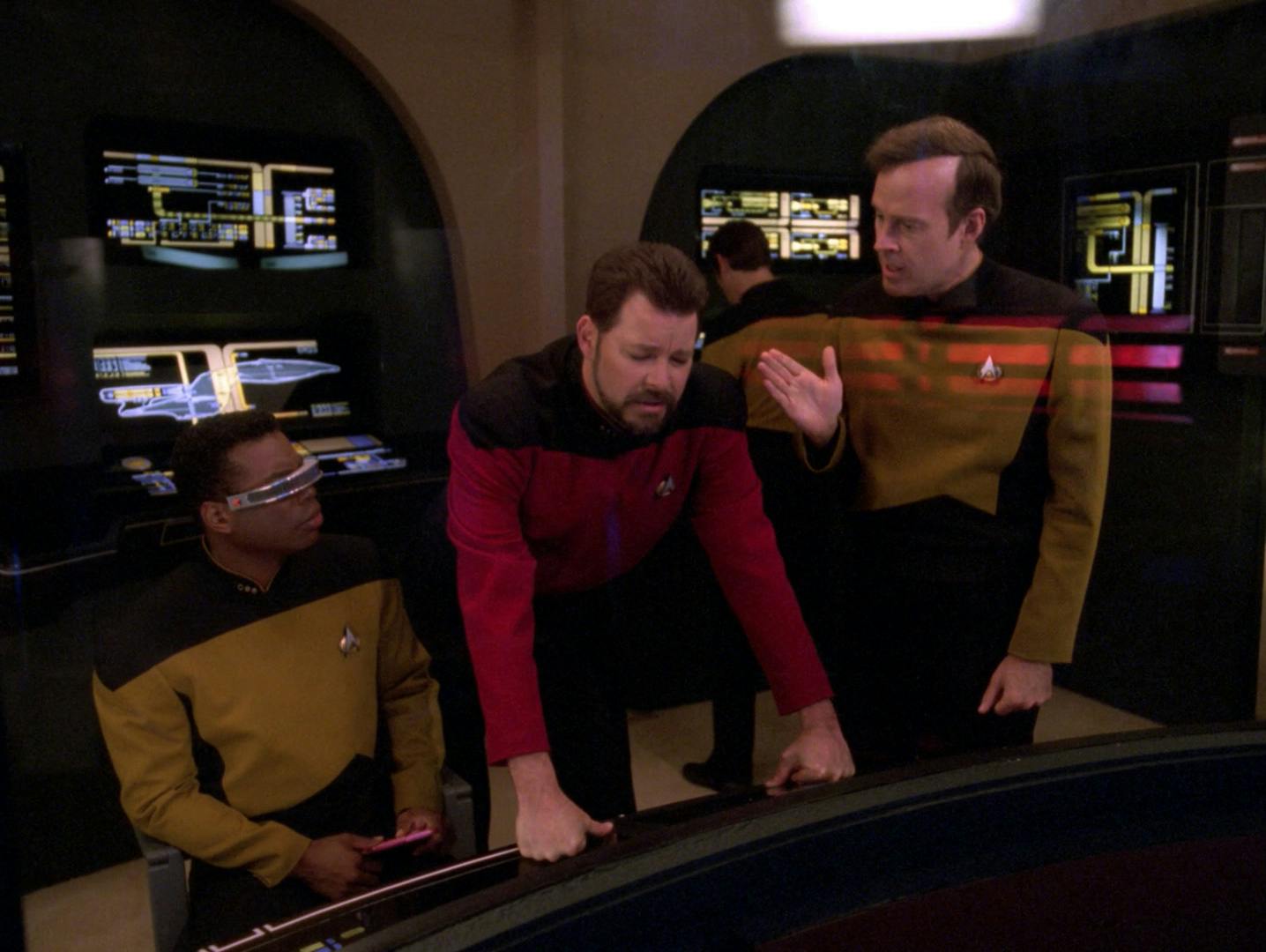
"Genesis"
StarTrek.com
Unlike a feature film, a 45 minute episode had to advance the story and its resolution pretty quickly, which was why in the next scene, it was crucial for McFadden to get Dorn to destroy Worf's pristine quarters pretty quickly.
McFadden and the writers had fun with the mutating virus that's ravishing the Enterprise-D crew. "One of the most interesting things in this episode is that, a lot of times, when there's a virus like the one in 'The Naked Now,' it affects all of the crew in the same way."
With "Genesis," McFadden explained, "Everyone was supposed to be feeling it in their own way because everyone evolves to be a different species or animal," which allowed them to play up the scenery like the scene with Riker and Barclay. They had a great time juxtaposing Riker's slow and lethargic transformation against the fast-moving Barclay.
Real World Constraints
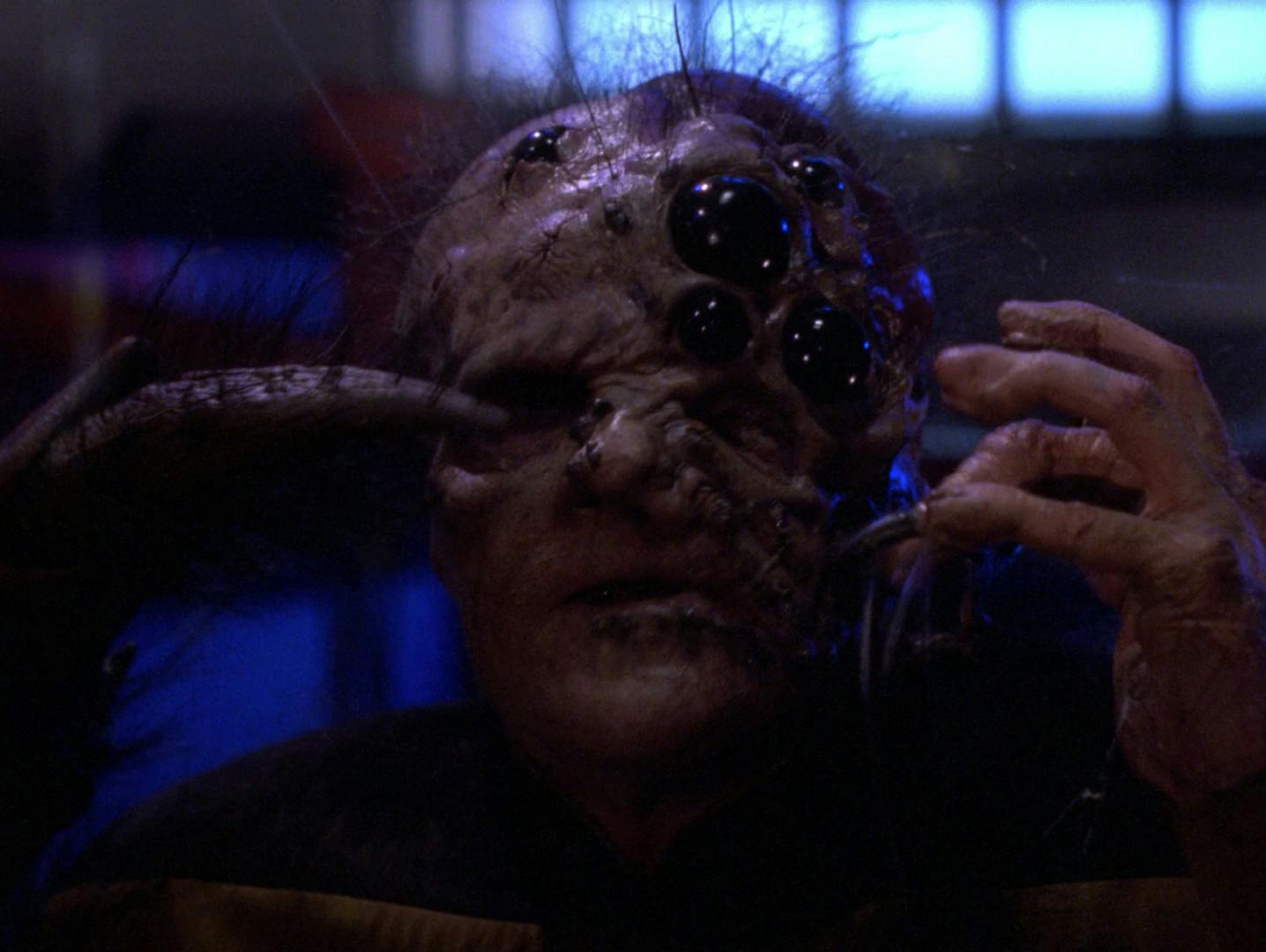
"Genesis"
StarTrek.com
What also constrained their budgets and impacted their shooting schedule was the 1994 Northridge, California earthquake that happened during production. Not only did it affect their sets, but they were down a lot of crewmembers who lost their homes to the earthquake.
Where she couldn't make too much changes to the sets, she had a blast working alongside makeup supervisor Michael Westmore. In the episode, we had several "weird" and "wacky" physical transformations, including Deanna's amphibian and Worf's prehistoric proto-Klingon, Riker's australopithecine and Barclay's spider-like creature, and Ogawa's ape-like creature.
Deanna as an amphibian, Riker as an australopithecine, Picard as a lemur, Barclay into a spider-like creature, Ogawa as an ape-like humanoid, and Worf as a prehistoric proto-Klingon. McFadden revealed that she and Westmore regarded "Genesis" as his best work across the series' seven seasons, praising his work as "brilliant" and "unbelievable."
The Growing Unease
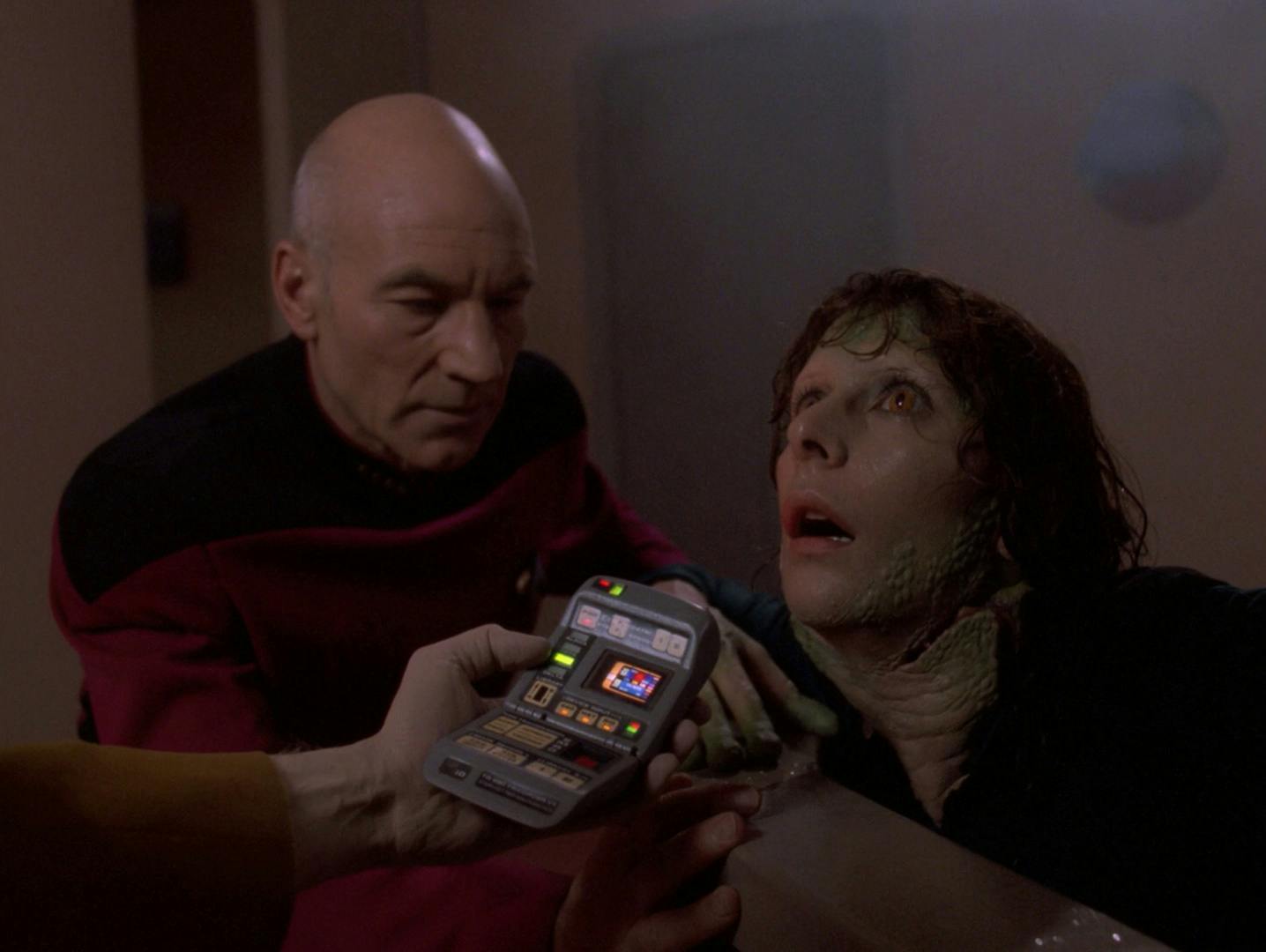
"Genesis"
StarTrek.com
To build to the severity of the crew's de-evolved state, McFadden found it was most impactful to put our beloved crewmembers in "upsetting" scenarios. To ensure that Deanna's bathtub scene wasn't sexy and to add to the entire episode's horrifying tone, they decided to make Deanna's uniform to fuse in with her lizard skin, and to show "her hair combing off," believing that visual would be "much stronger and scarier."
In addition to the makeup and playing around with the angles and choreography, as the crew transforms into these weird creatures, there's the sound of a heartbeat permeating the ship. McFadden stated the heartbeat was important to building the "ominous feeling" as if it's its own creature, and audiences can sense something's wrong and "heightening" their alarming state making the connection to Edgar Allan Poe. Adding to the ominous feeling was adding all of dark corners and corridors aboard the ship because the Enterprise-D has hardly been shown in complete darkness, and seeing how it would affect Picard and Data who return "home" to a freaky state where it's just like "bedlam."
Favorite Shot
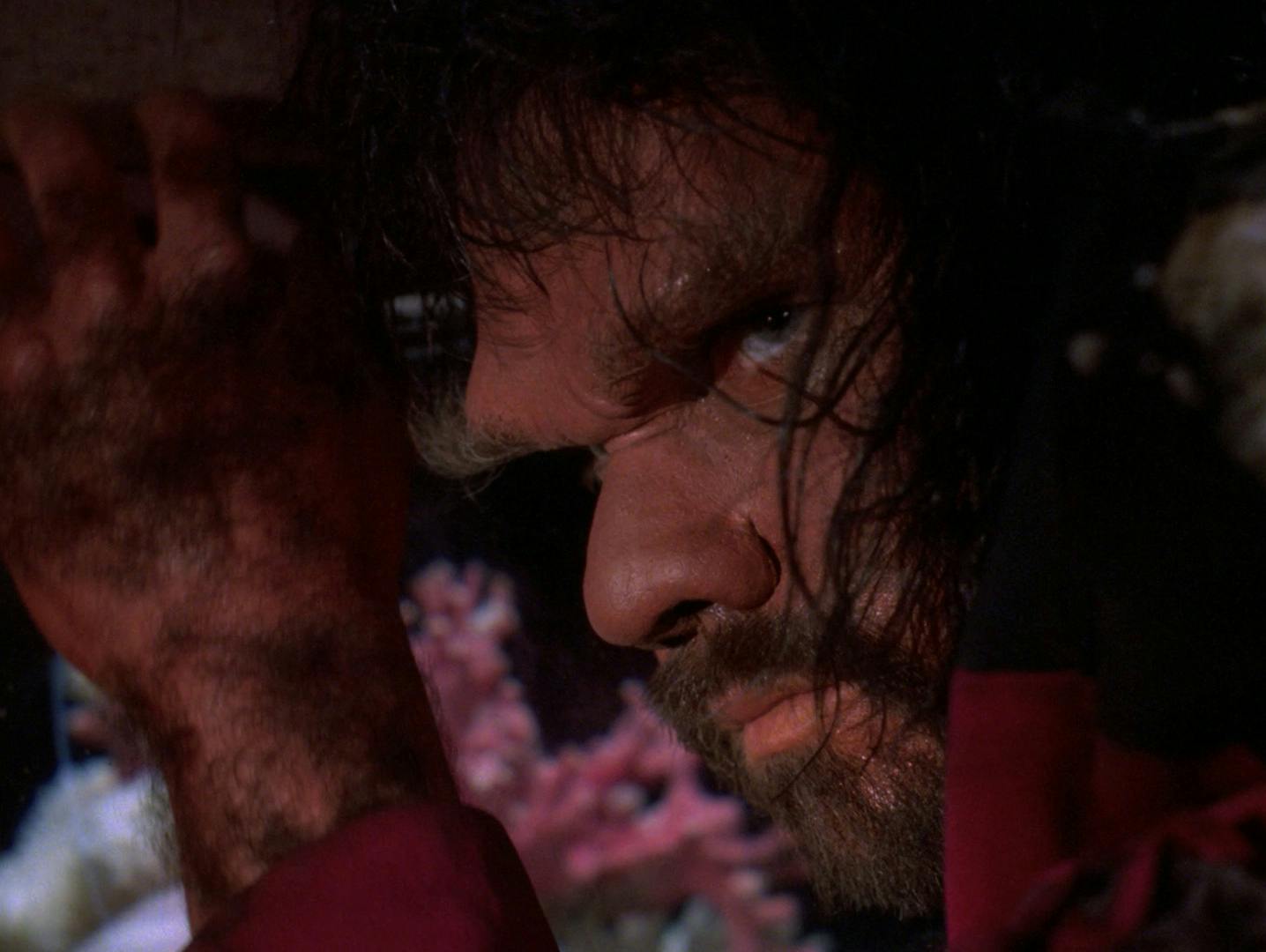
"Genesis"
StarTrek.com
It was crucial to McFadden to show Riker in the Ready Room, and as he slowly turns away from the fish tank towards Picard and Data (and audiences), there's the intensity in his eyes, which the director calls out as her favorite shot out of the entire episode, before seeing his complete de-evolution into an australopithecine.
Gates commended Westmore's makeup as well as Jonathan Frakes' movement and performance in the scene.

